The document provides an overview of Field Programmable Gate Arrays (FPGAs), including their architecture, historical development, types, and practical applications. Key components such as Configurable Logic Blocks (CLBs) and Look-Up Tables (LUTs) are explained, along with the advantages of FPGAs like reconfigurability and improved performance per watt. The programming languages used for FPGAs, particularly Verilog and VHDL, are briefly discussed, emphasizing their importance in hardware description and circuit design.

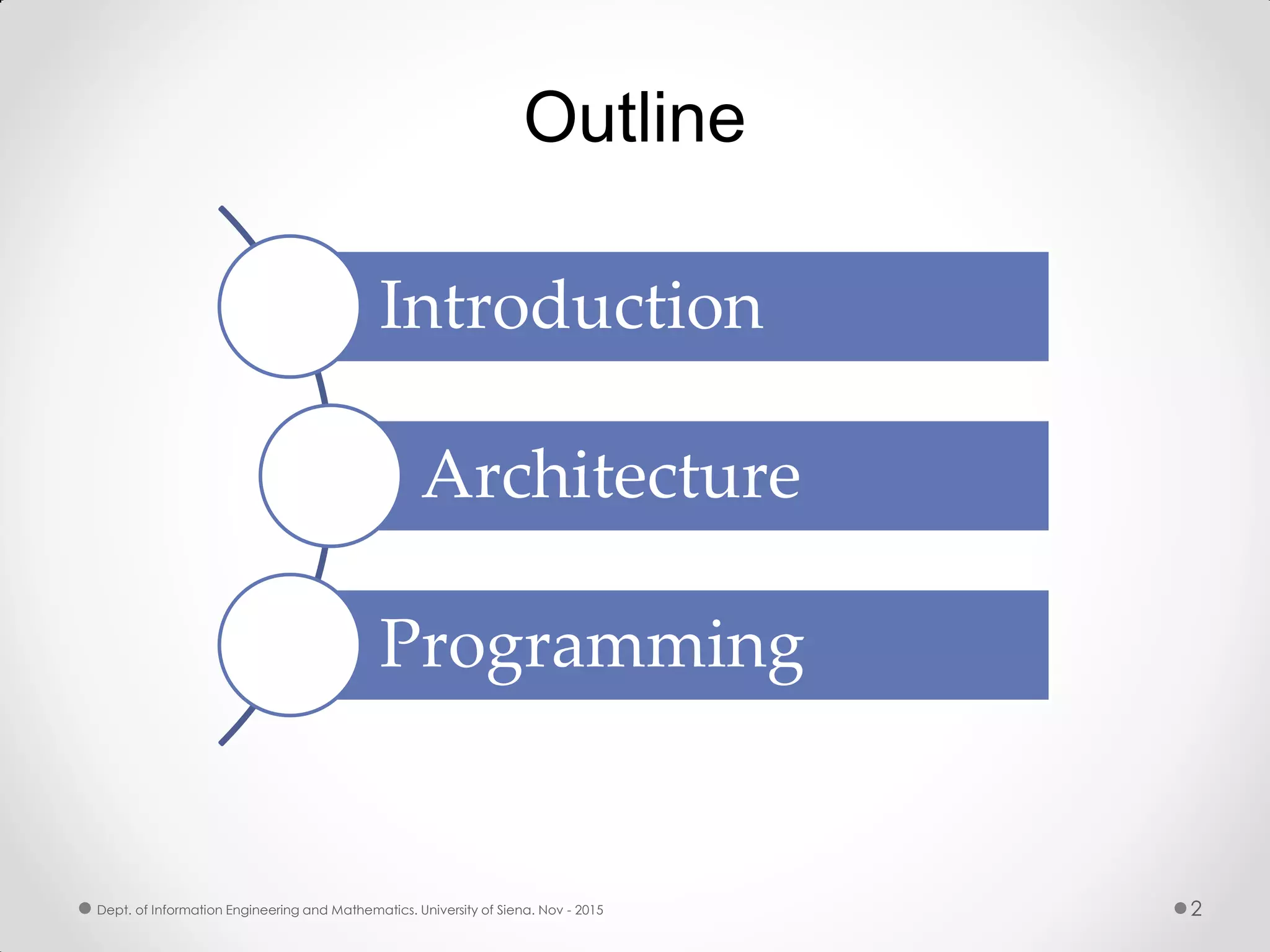
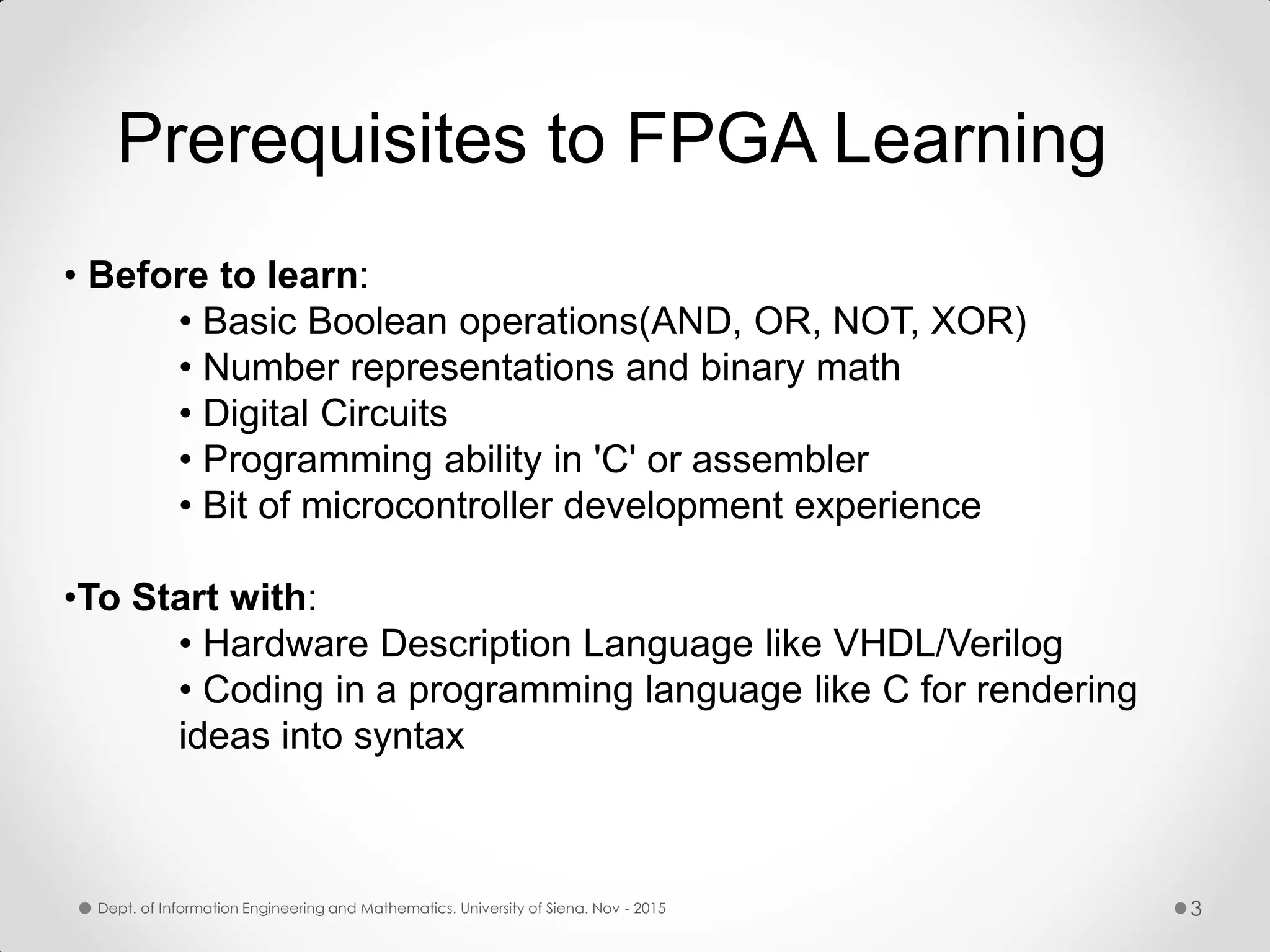
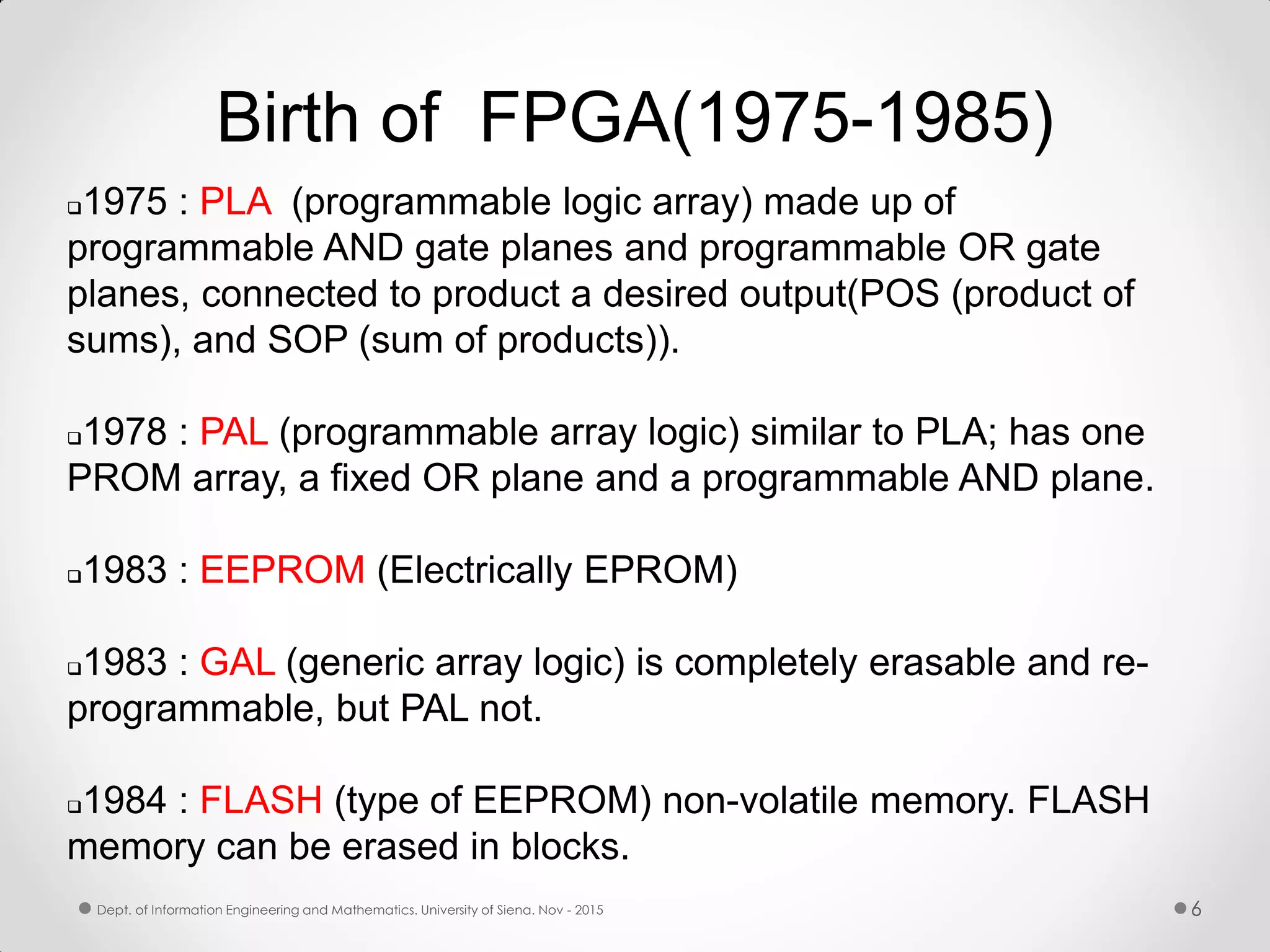


![But.. why Use FPGA? Application needs tailored HW No need to over-provision (Like custom ASIC) Don’t worry about mistakes it is “Reconfigurable” Make chip development faster. FPGAs provide significantly more hardware acceleration performance/watt [1] Image Source: Xilinx SDAccel Developer Zone. http://www.xilinx.com/products/design-tools/ software-zone/sdaccel.html. “FPGA-based accelerators can achieve up to 25x better performance per watt and 50-75x latency improvement compared to CPU/GPU implementations while also providing excellent I/O integration (PCI, DDR4 SDRAM interfaces, high-speed Ethernet, etc.)..”[1] Dept. of Information Engineering and Mathematics. University of Siena. Nov - 2015 9](https://image.slidesharecdn.com/fpga12octslideshare-151113170849-lva1-app6891/75/FPGA-In-a-Nutshell-7-2048.jpg)

![But.. what about Weaknesses For a specific circuit, relative to a custom ASIC, FPGAs use more area, power and slower FPGA resources are of a fixed size and have limited flexibility options. But you may not have the option for “reconfiguration” Metric FPGAvsASIC[1] FPGAvsASIC[2] Area 30-40X 2-20X Delay 3-4X 1.7-3X Dy. Power 12X Static Power 5-90X 2-5X [1] Compares Altera Stratix-II to ST Microelectronics standard cells (90nm technology) [Kuon et. al. (TCAD`07)]. [2] Altera Corp 2006. Dept. of Information Engineering and Mathematics. University of Siena. Nov - 2015 11](https://image.slidesharecdn.com/fpga12octslideshare-151113170849-lva1-app6891/75/FPGA-In-a-Nutshell-9-2048.jpg)



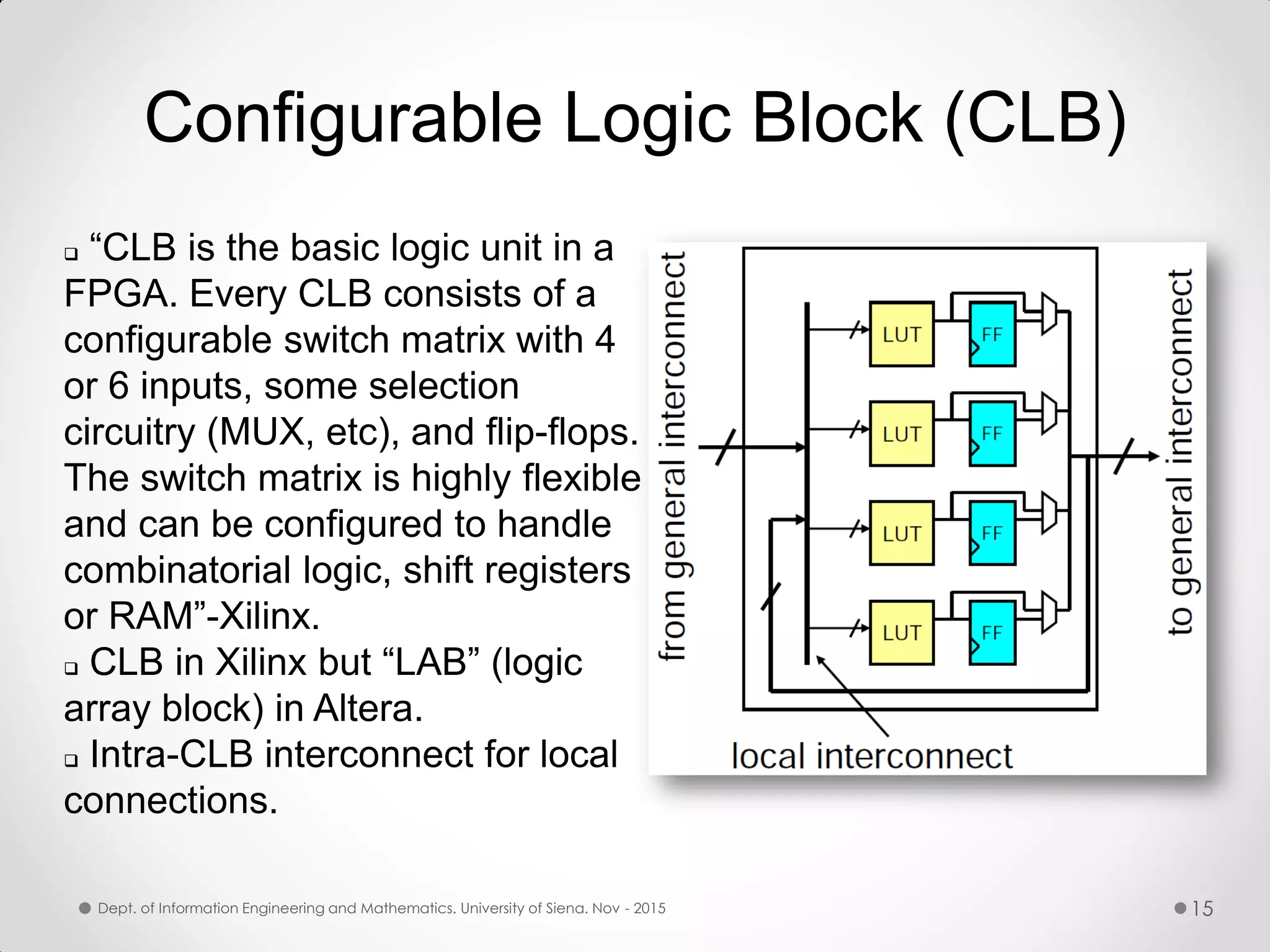
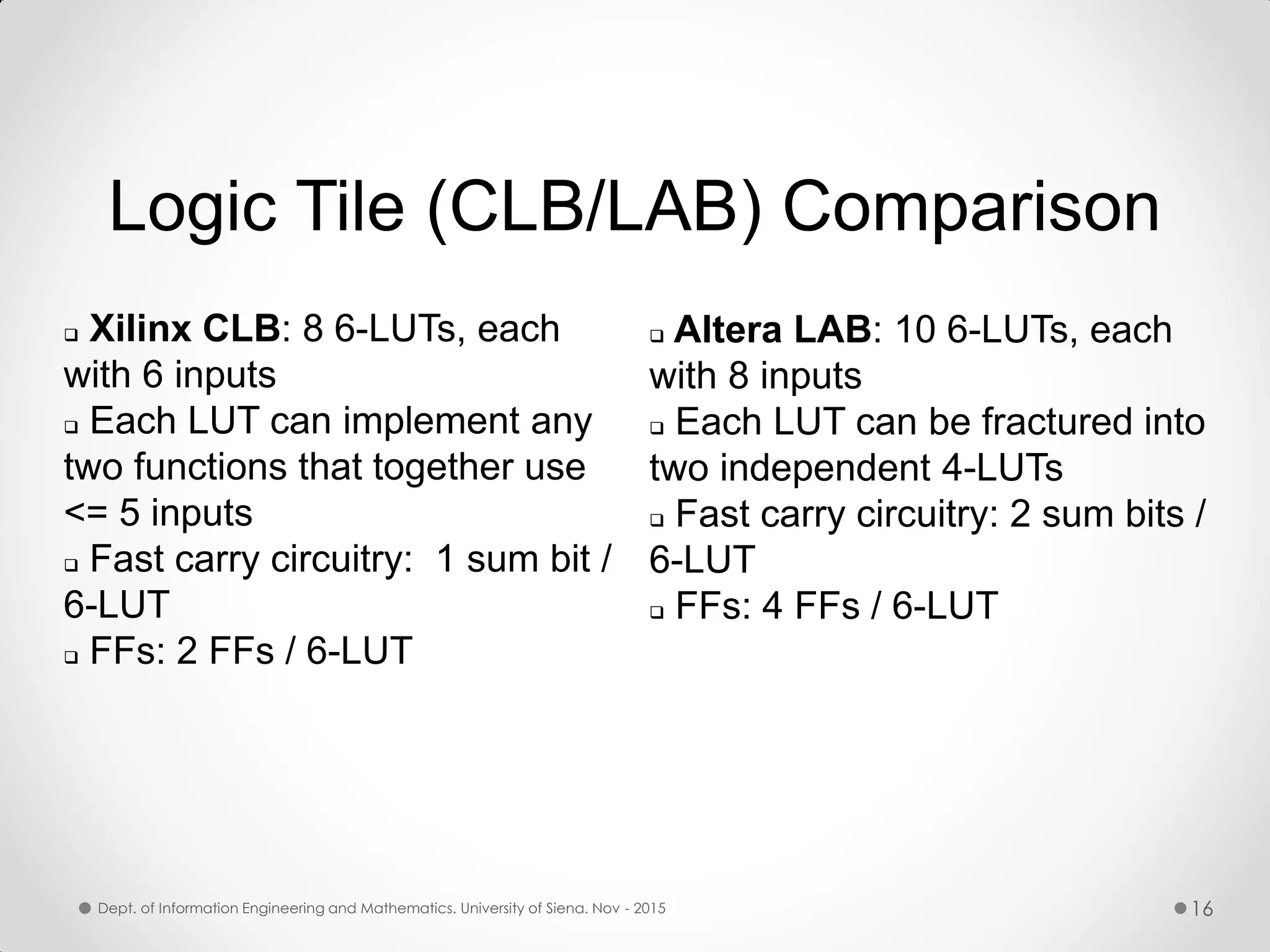

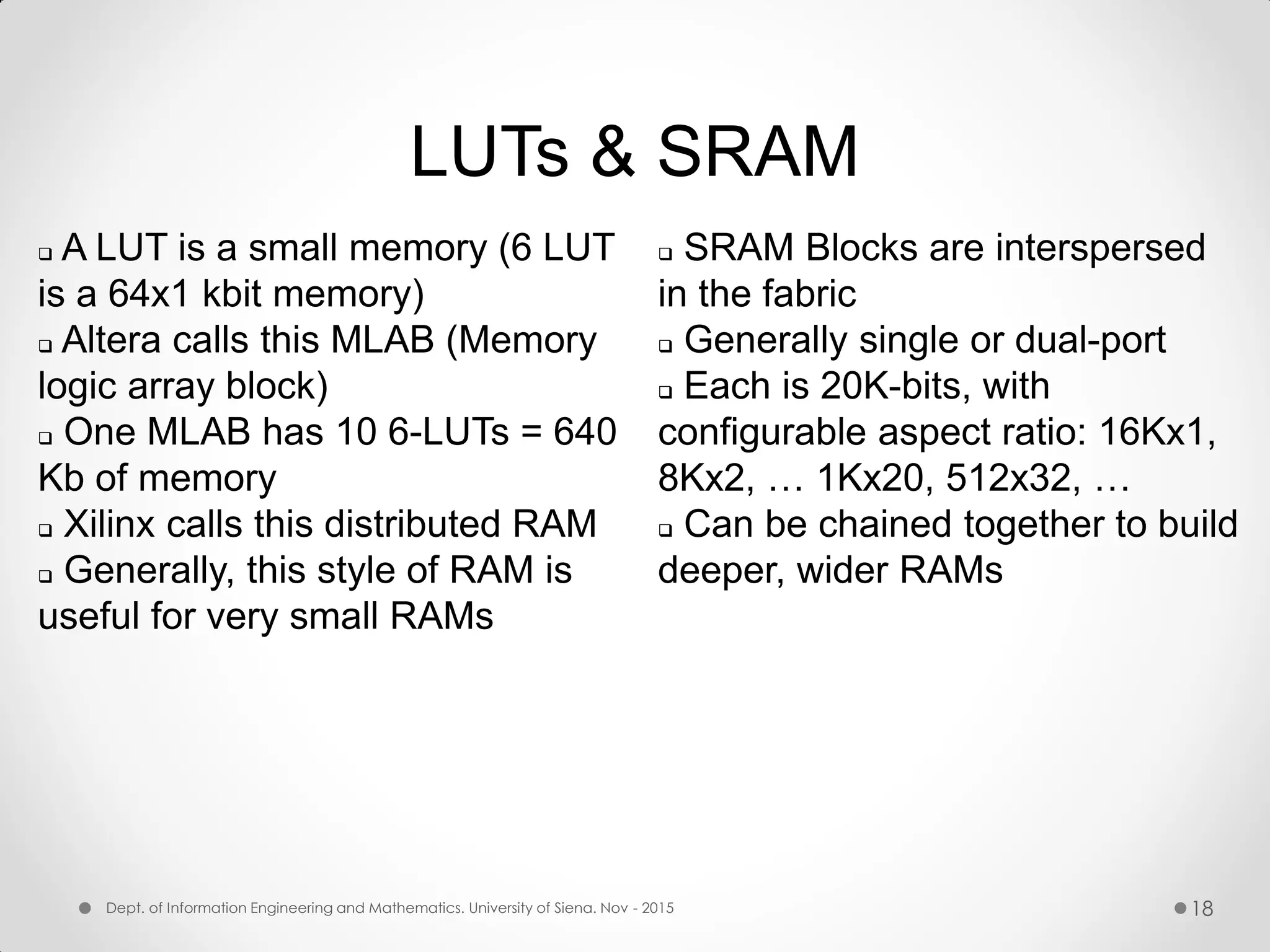
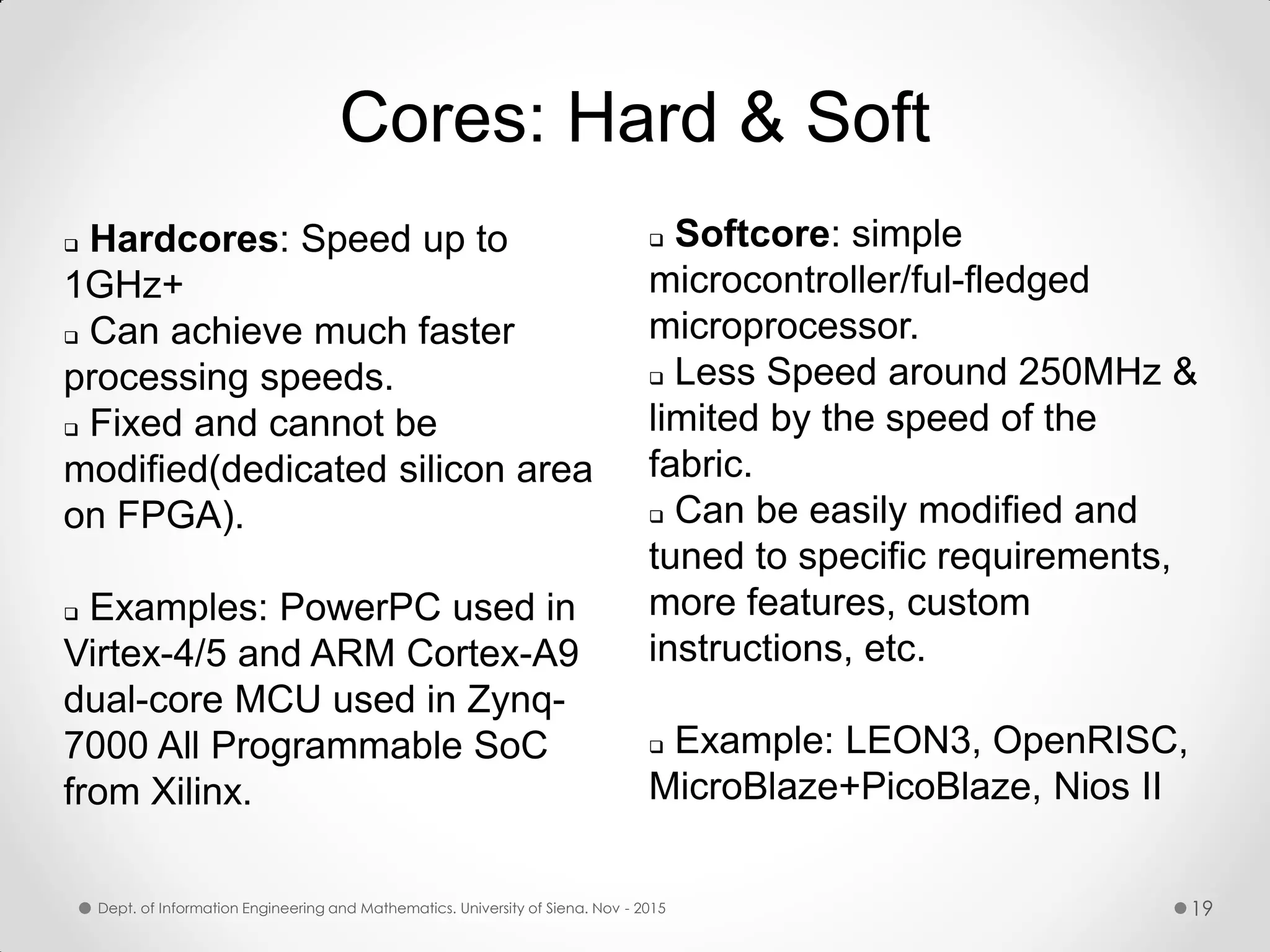


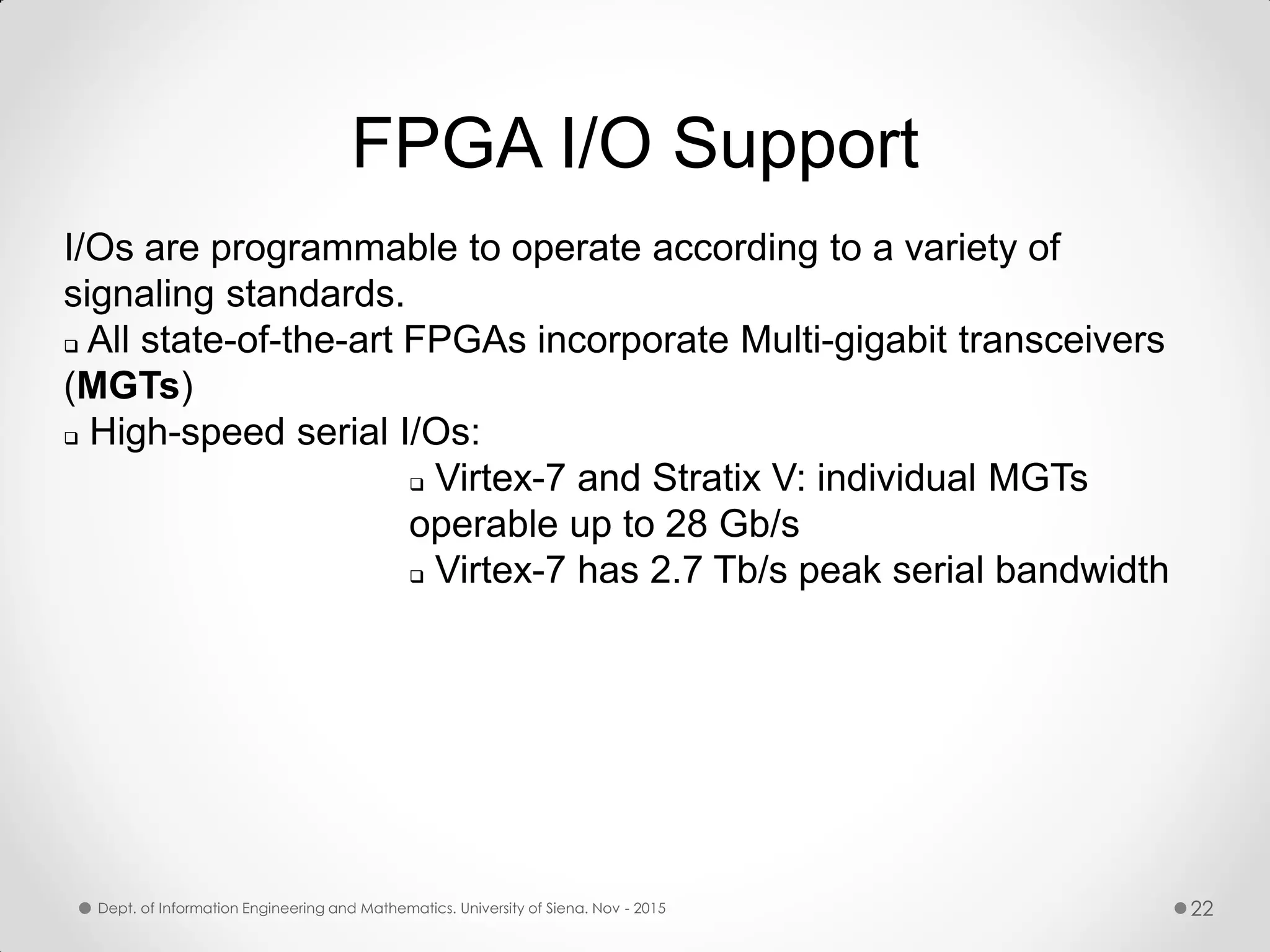

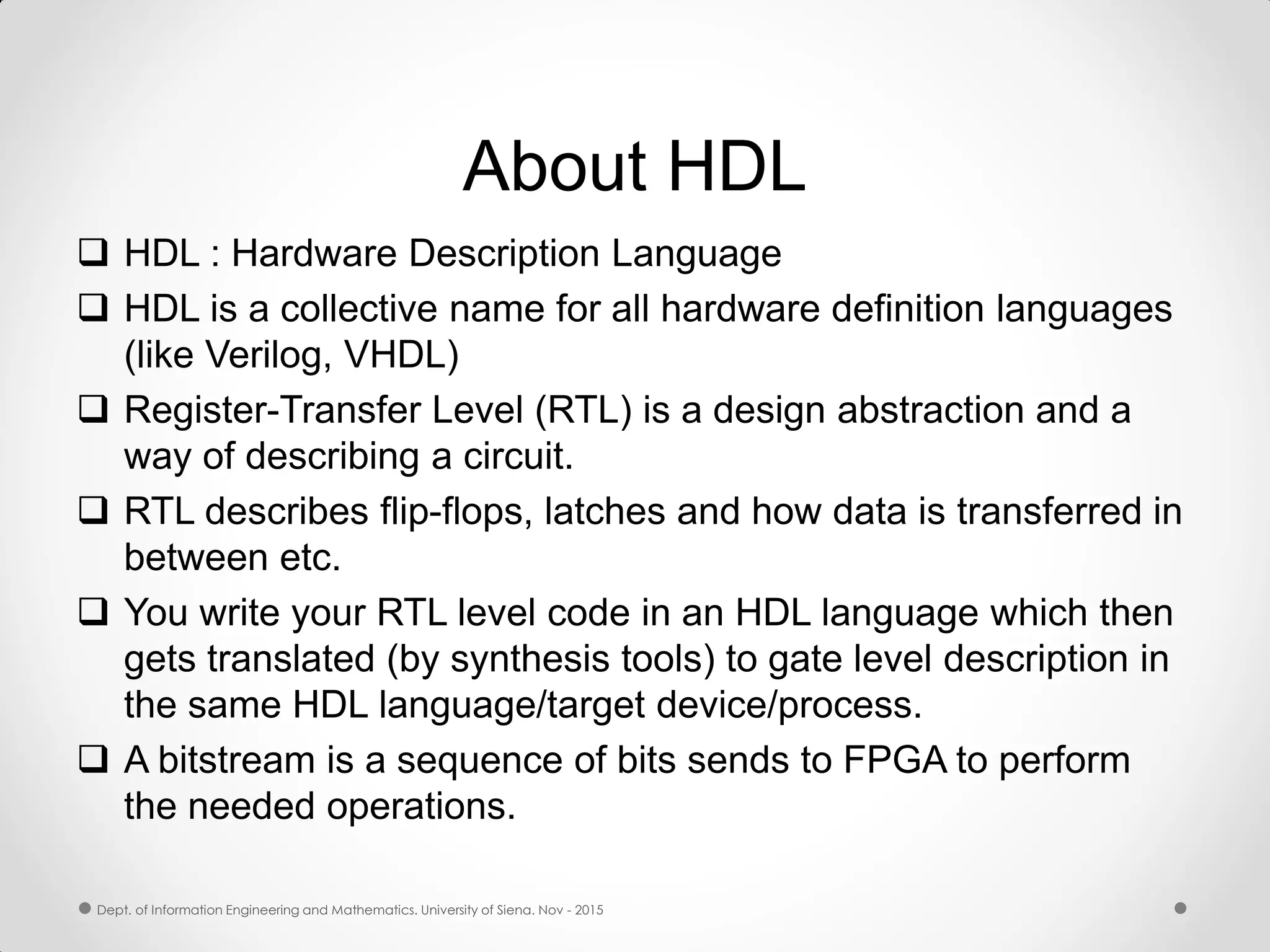
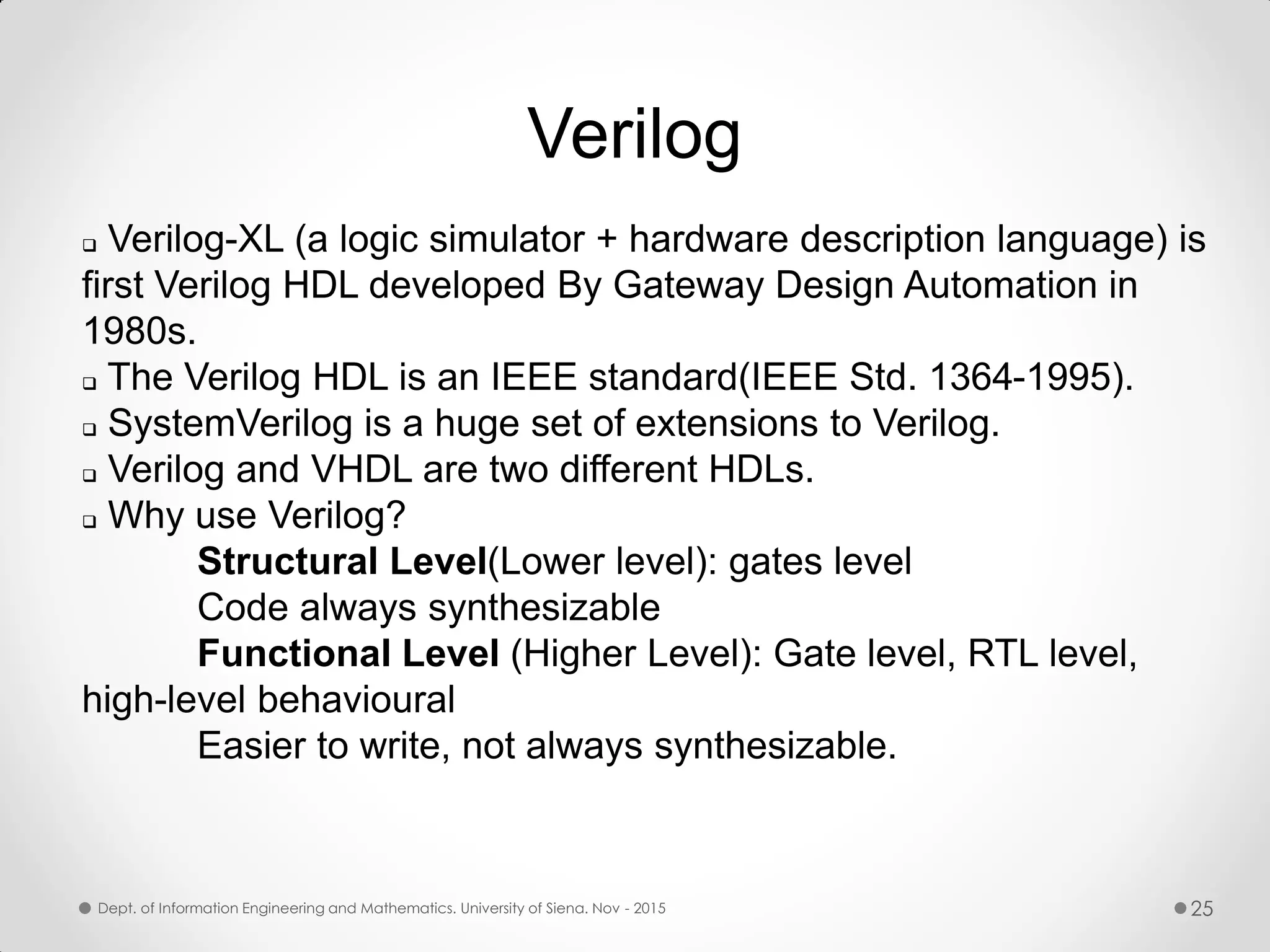
![Verilog Data Types: Basic type: Bit vector Values: 0, 1, X (don't care), Z (high impedance) Example: Binary: 4'b11_10, Hex: 16'h034f, Decimal: 32'd270 Use wire to connect components: Single wire Example: wire my_wire Array of wires : Example: wire[7:0] my_wire) Reg for procedural assignments: Example reg[3:0] accum; // 4 bit “reg”) reg is not necessarily a hardware register Dept. of Information Engineering and Mathematics. University of Siena. Nov - 2015 26](https://image.slidesharecdn.com/fpga12octslideshare-151113170849-lva1-app6891/75/FPGA-In-a-Nutshell-24-2048.jpg)
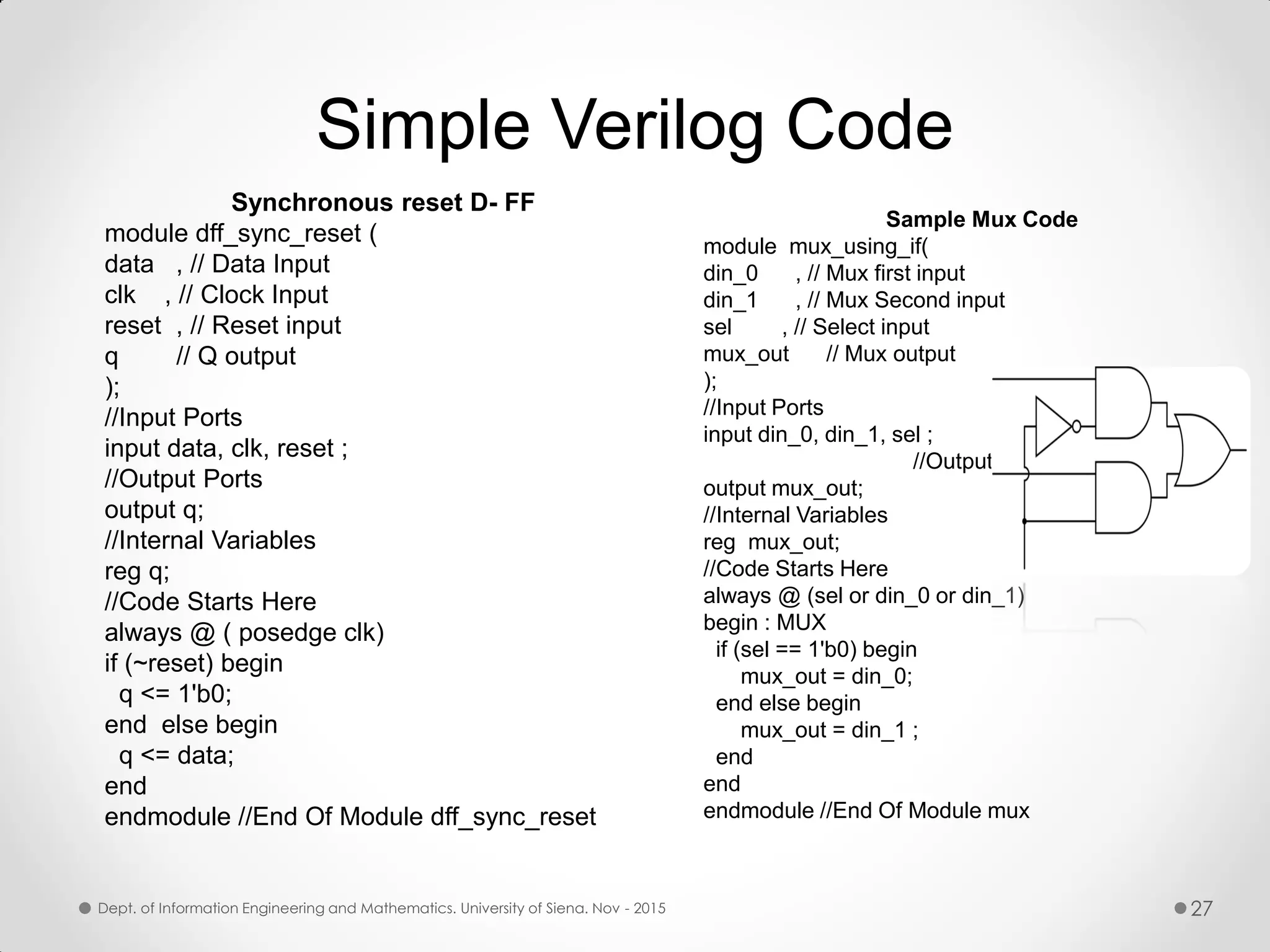

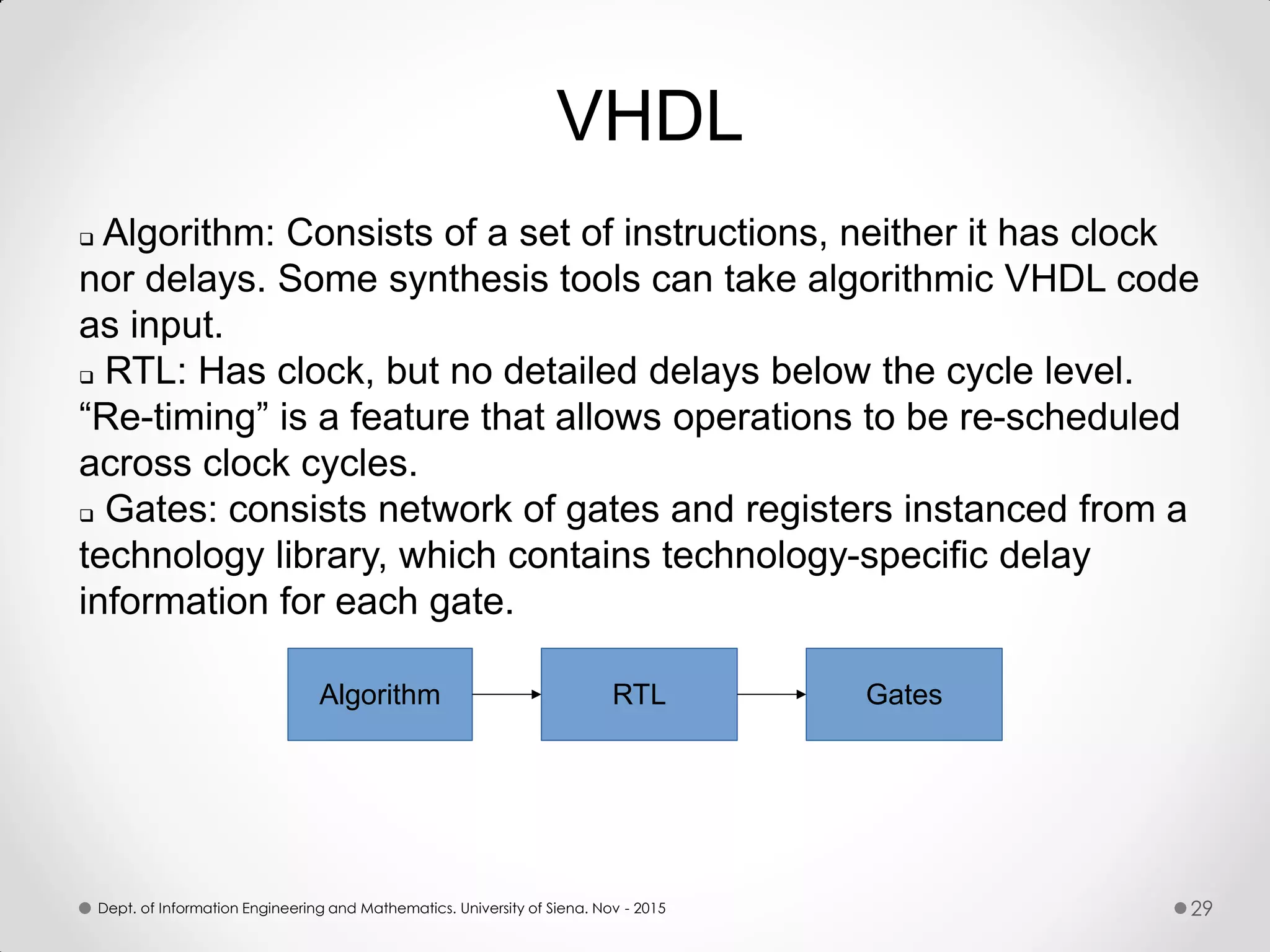
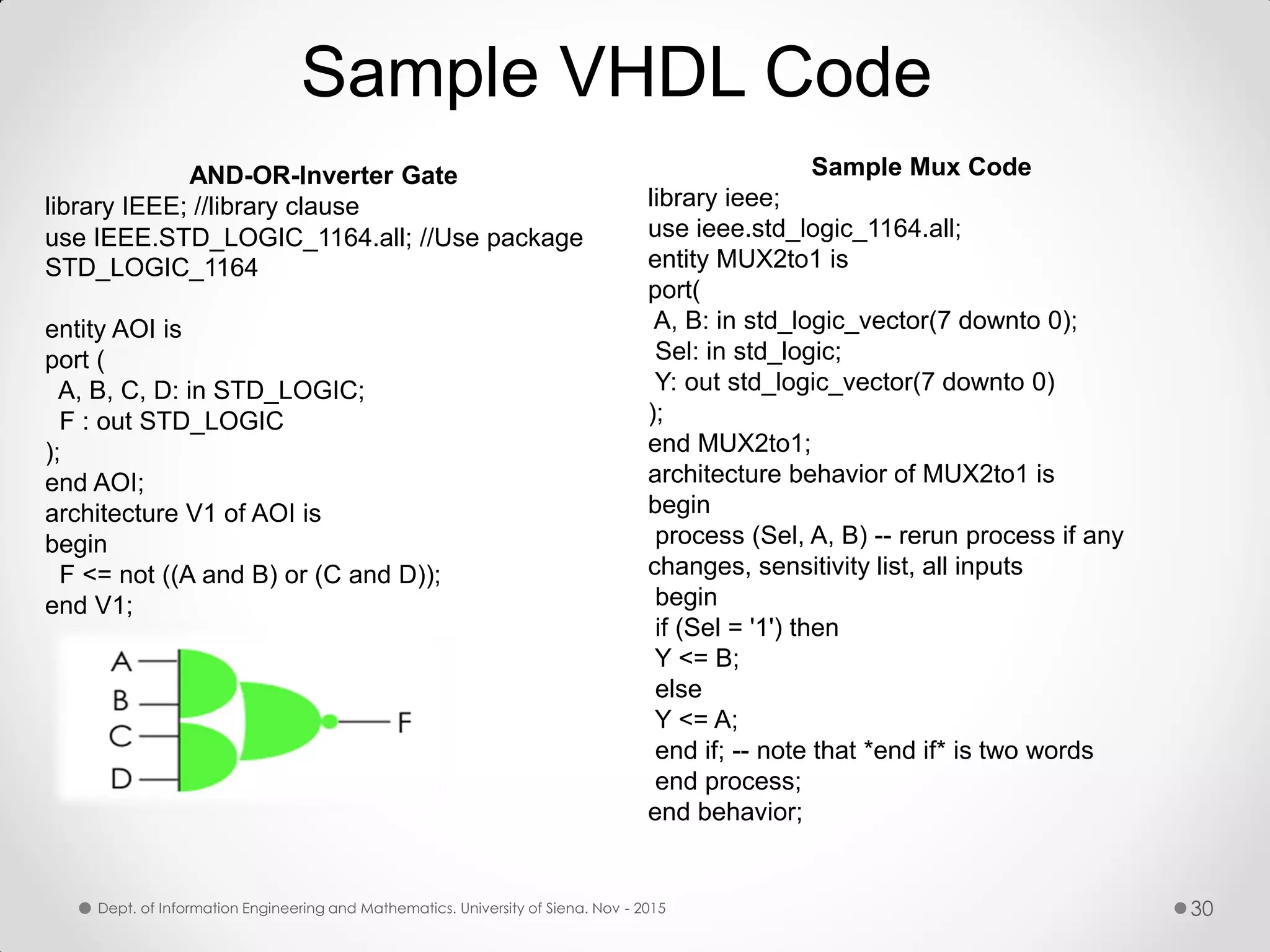
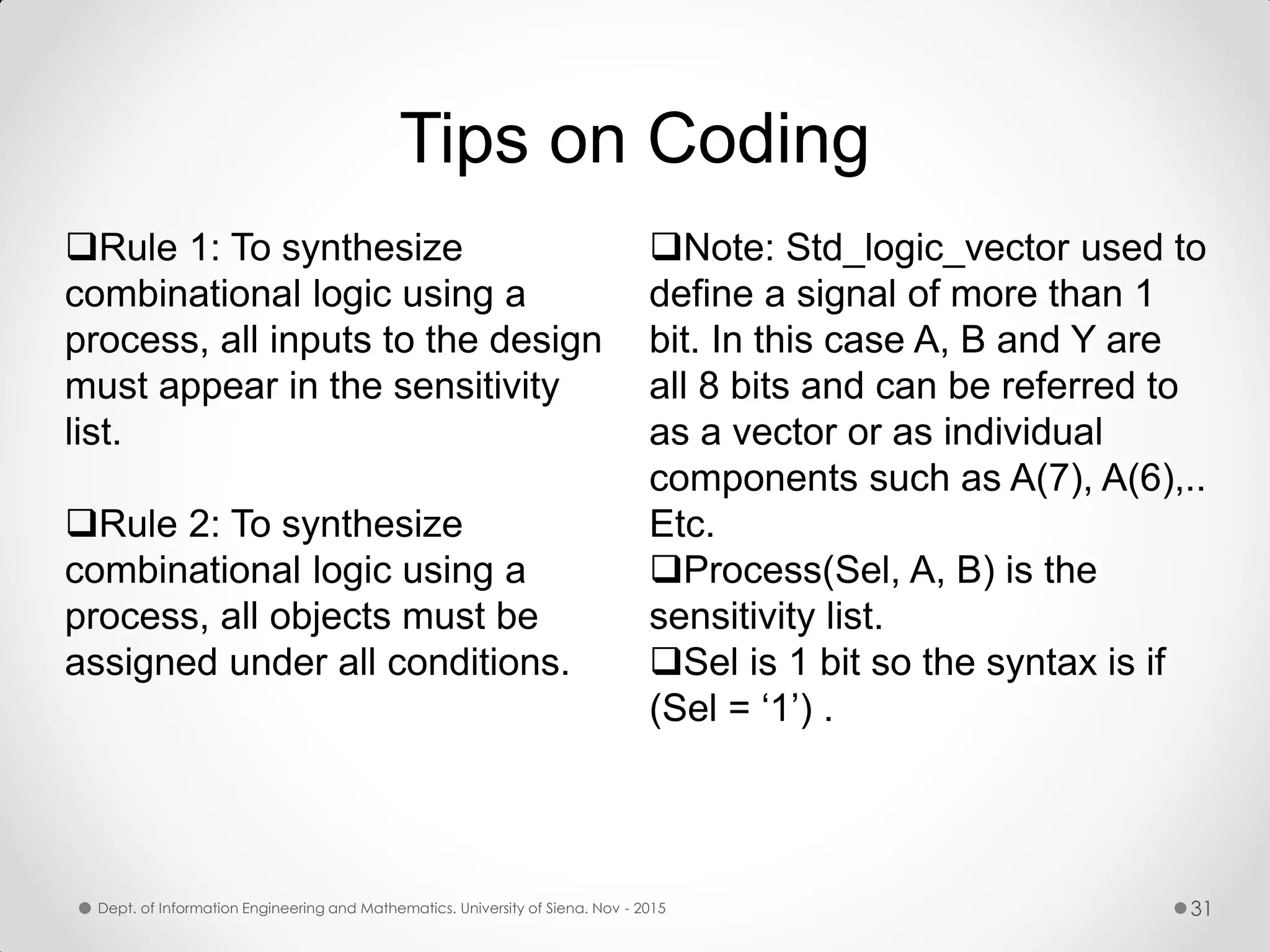
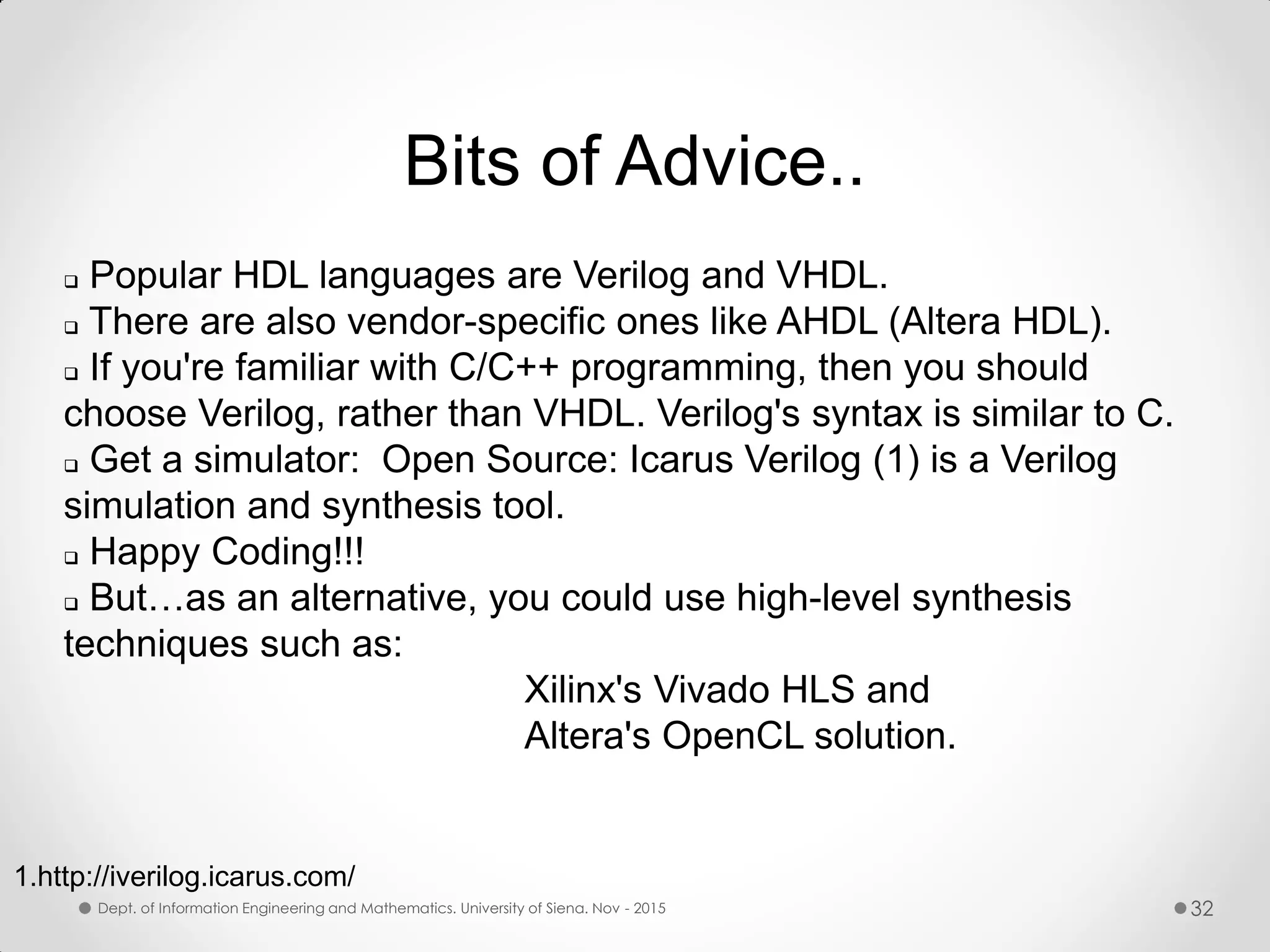
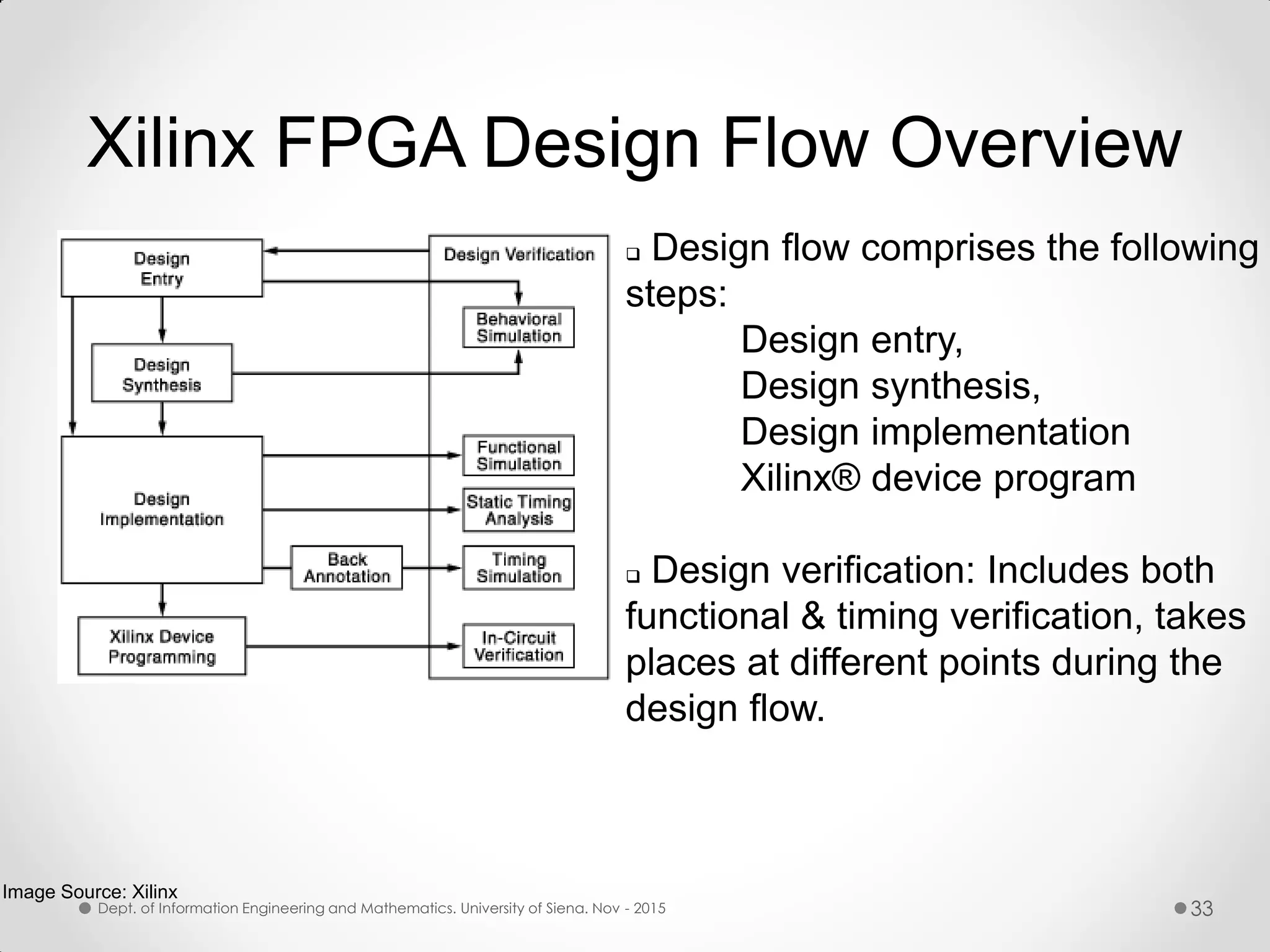
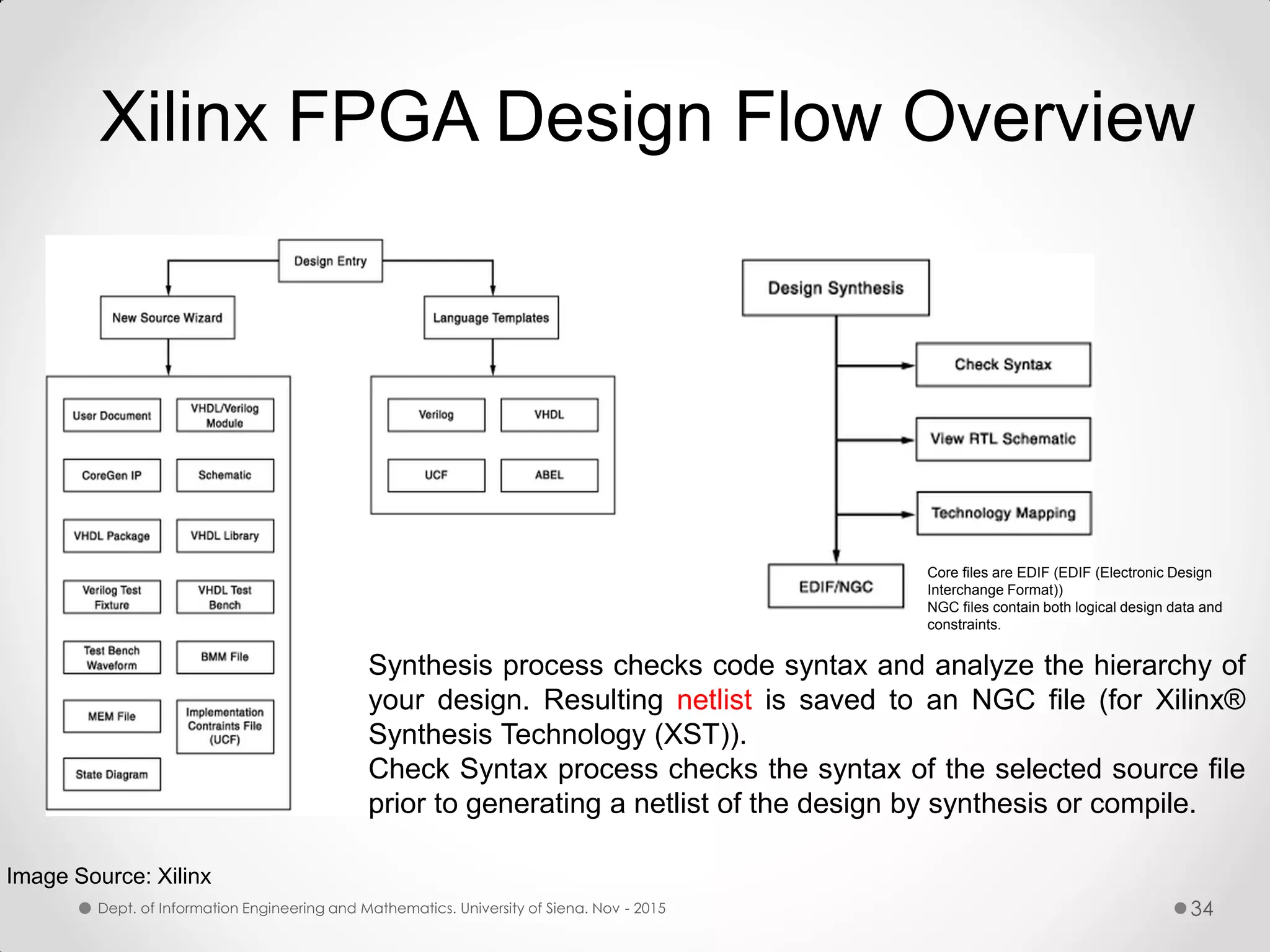
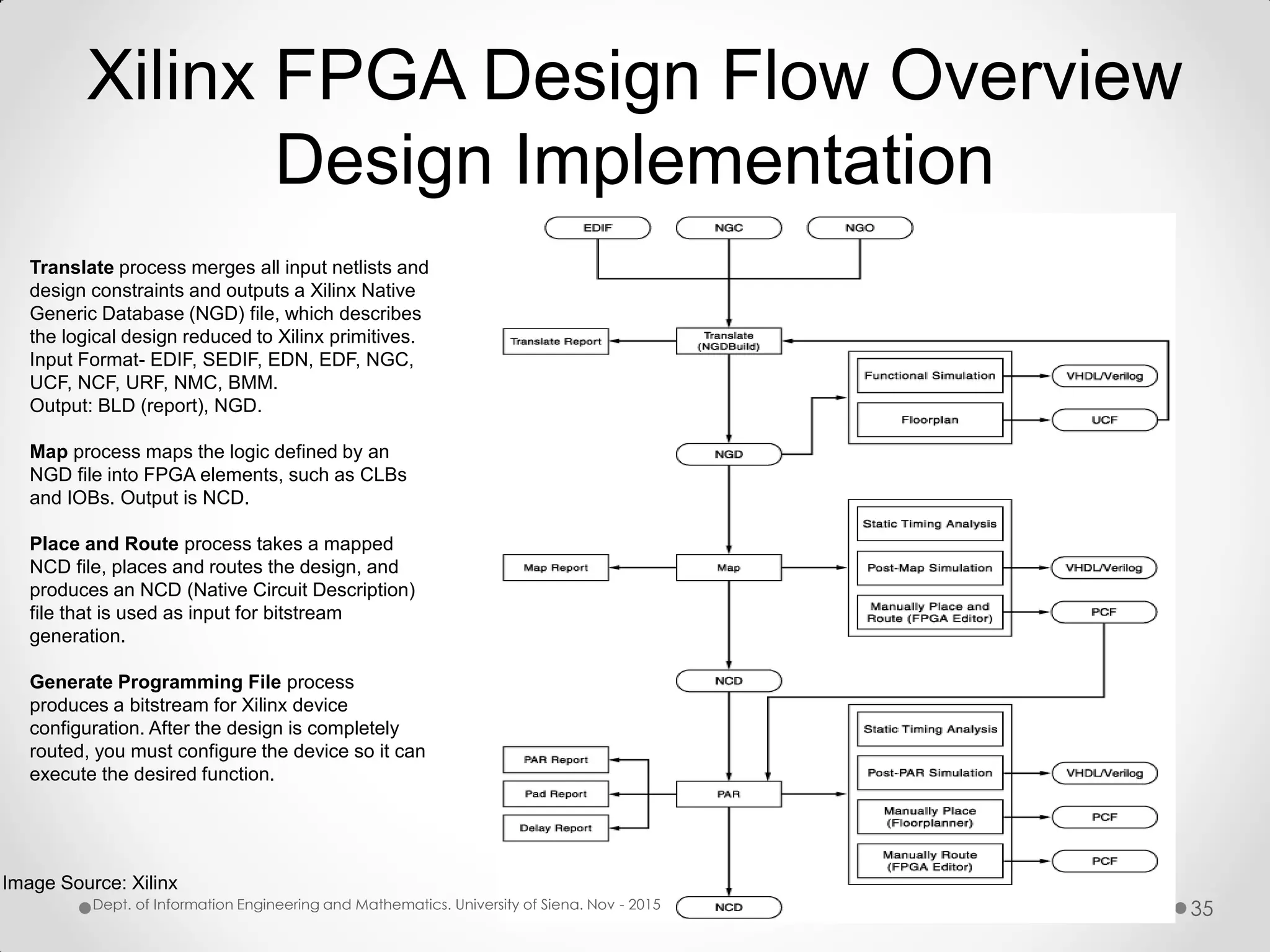


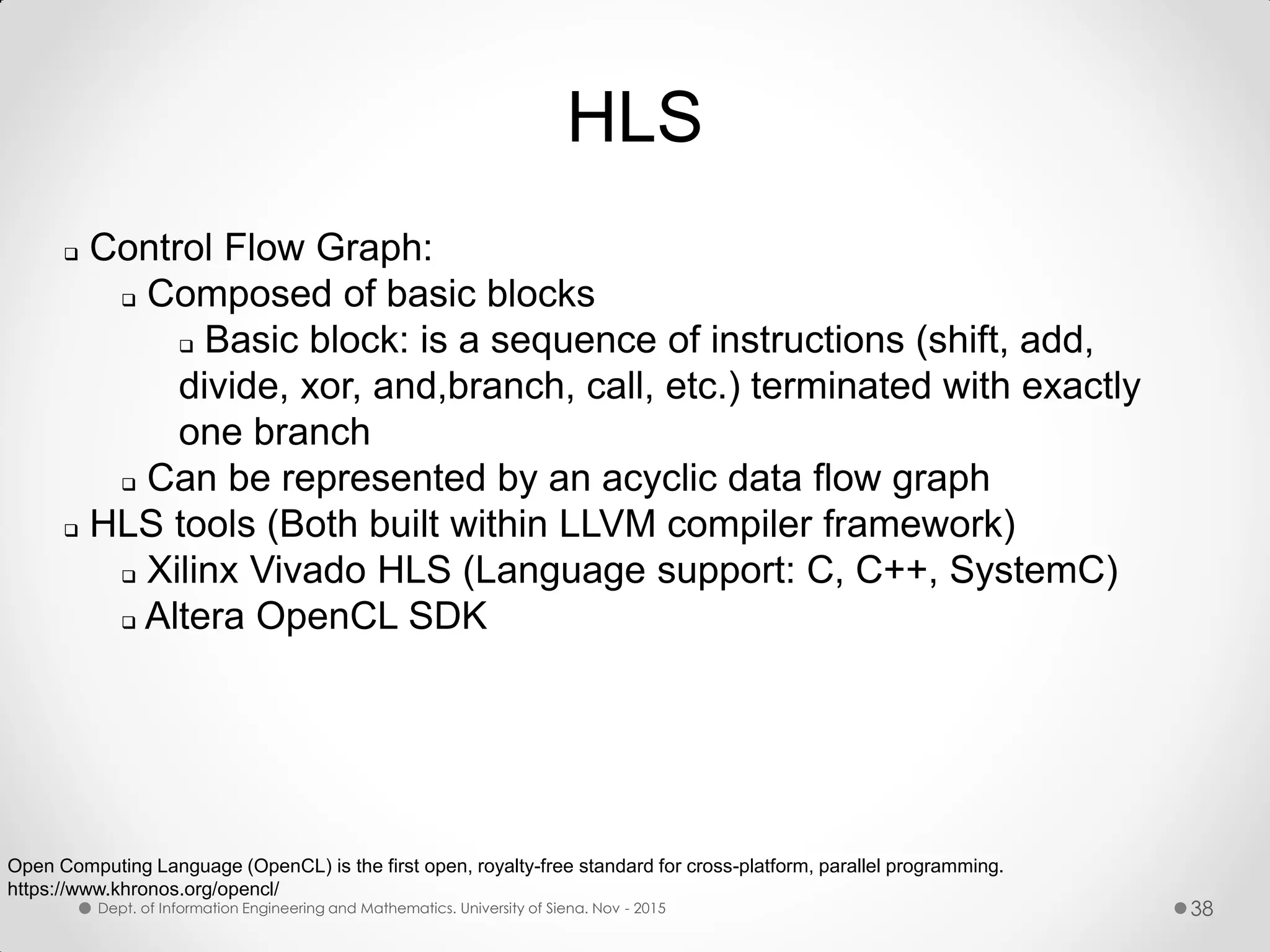
![HLS: Key Aspect Scheduling: Defines the HW’s finite state machine How to assign the computations of a program into the hardware time steps? Or Which operations can be scheduled in the same time step? Or Which operations are dependent on others? SDC[1]: System of Difference Constraints : formulate scheduling as a mathematical optimization problem (linear program (LP)). Variables: For each operation(op) to schedule, create a variable(var). var will hold the cycle # in which each op is scheduled. 1. Cong, Zhang, “An efficient and versatile scheduling algorithm based on SDC formulation”. DAC 2006: 433-438. Dept. of Information Engineering and Mathematics. University of Siena. Nov - 2015 39](https://image.slidesharecdn.com/fpga12octslideshare-151113170849-lva1-app6891/75/FPGA-In-a-Nutshell-37-2048.jpg)
![ Constraints: Dependency Constraints : The subtract can only happen after the add and shift, Clock Period Constraints : For each chain of dependant operations in DFG, find the path delayD. Resource Constraints: Allow up to 2 load/store operations in a cycle Binding: e.g. Bind the following scheduled operations. Loop Pipelining : Overlap execution of adjacent loop iterations. Can be combined with loop unrolling for (int i = 0; i < N; i++) { a[i] = b[i] + c[i] } Each iteration requires: • 2 loads from memory • 1 store • No dependencies between iterations HLS: Key Aspect Dept. of Information Engineering and Mathematics. University of Siena. Nov - 2015 40](https://image.slidesharecdn.com/fpga12octslideshare-151113170849-lva1-app6891/75/FPGA-In-a-Nutshell-38-2048.jpg)



